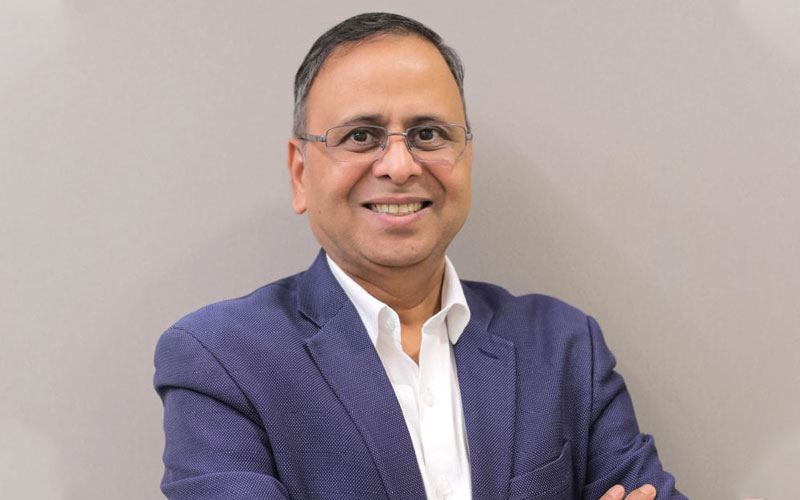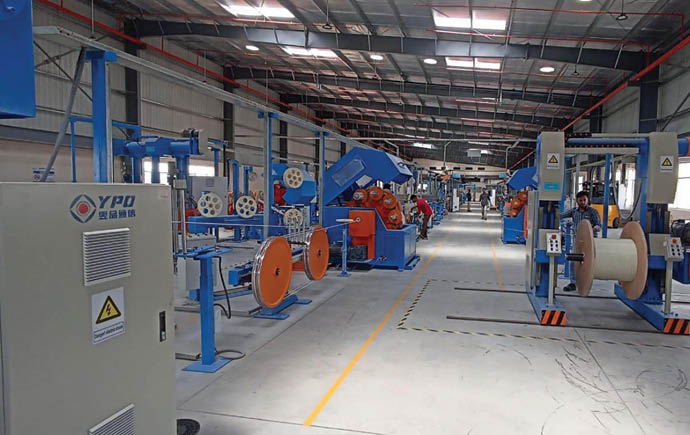West Coast Optilinks, a leading provider of high-performance optical fibre solutions for telecommunications, broadband, utilities and data centers is focused on driving innovation and delivering customised solutions for next-generation networks. The company continues to expand its market presence by delivering customozed solutions for various applications requiring high speed connectivity. This was revealed by Mr. Pramod Kumar Srivastava, CEO, West Coast Optilinks, during an exclusive interaction with Wire & Cable India.

Wire & Cable India: What types of fibre optic cables do you offer, and how do they differ in terms of performance and application?
Pramod Kumar Srivastava: West Coast Optilinks (WCO) offers a variety of fibre optic cable products customized for different applications, installation requirements and unique industry needs. It includes single-mode and multi-mode fibres for different transmission distances; armored, unarmoured, micro & aerial cables for specific installation needs; and customized hybrid cables for specific applications. The demand for these cables depends on specific requirements of the application such as distance, environment, protection requirement, precision and bandwidth needs.
WCI: What has made them unique in the competition as well as in application efficiency? What state-of-the-art technologies do you use to manufacture them?
PKS: The uniqueness of our products comes from the customization we do for each of our customers to meet their specific applications and our ability to quickly adapt the manufacturing processes to meet stringent quality standards. As an organization, we focus on understanding customer applications and if that means going to the clients for first-hand understanding of their specific application needs, we do it on priority. We take in a lot of positive feedback with the ultimate goal of making our customers build a resilient and reliable digital infrastructure. Success of our customers is at the core of all our actions. Our manufacturing infrastructure and process is based on the latest technology to produce optical fibre cables (OFCs). We are also building a state-of-the-art optical fibre draw facility at Hyderabad using the latest technology, which is expected to become operational soon.
WCI: In what sectors do they find their major applications? What more sectors are you eyeing?
PKS: Our products find application in many sectors, such as telecommunications, utilities, data centres, smart cities, defence and other segments requiring high-speed data connectivity. Additional applications include healthcare, industrial automation, smart cities and intelligent transportation systems. Looking ahead, we may explore emerging sectors that require a robust fibre infrastructure for high-volume data like renewable energy, smart homes, security and surveillance. Other potential areas of growth could be Internet of Things (IoT), AI and autonomous vehicles, all of which depend on reliable and high-speed data transmission provided by fibre optic technology.
Watch: RR Kabel | Solar Cables | Solar Plant | Renewable Energy
WCI: How closely do you coordinate with your clients when it comes to installation? What challenges do you often experience?
PKS: Our OFCs are designed and manufactured keeping in mind specific application needs, deployment practices, ease of deployment and efficient O&M of the network. We have a dedicated team of experts which understands these requirements in detail and works closely to support our customers in need. On-ground challenges are one of the biggest we face in the OFC segment, along with lack of skilled manpower for deployment. These impact the quality and speed of the network being built, and also poses problems in its maintenance with minimum cuts.
WCO has built an EPC team to build OFC networks for our customers. Our EPC work starts with coordination at the pre-installation stage, where the team conducts in-depth consultations to understand the client’s needs, including the cable type, technical specifications and environmental conditions of the installation site. The next stage involves site surveys and detailed planning. This includes on-site surveys to identify potential challenges. Despite careful planning, on-field challenges do pop up. By focusing on communication and pre-emptive problem-solving, WCO overcomes these challenges, ensuring an efficient delivery of fibre optic installations and meeting client expectations. This client-centric approach is key to maintaining high network standards and project success.
WCI: What are the latest advancements in fibre optic technology, and how might they benefit the users?
PKS: Though optical fibre technologies have matured quite a bit, at the same time, there is a continuous shift in the way data is transmitted and the requirement of faster, more reliable and efficient solutions. These ever-changing needs, coupled with how installation happens in reality on-field, is driving innovations in the fibre optics space. For example, bend-insensitive fibres help in better management of losses in installation & during O&M practices on ground.
“With a new OFC factory at Hyderabad, which is fully operational, we have already doubled our OFC capacity.”
WCI: How important is sustainability to your operations? Elaborate some of the initiatives.
PKS: Sustainability is a core focus in the operations of WCO as the company recognizes its responsibility to minimize environmental impact while maintaining high-performance standards in fibre optic production. Some of the initiatives undertaken include energy-efficient manufacturing, waste reduction & recycling, sustainable supply chain, reduction of waste to landfills, etc. Efforts are on to enhance renewable energy sources into our operations and work towards carbon neutrality. These sustainability initiatives are core to our business model.
WCI: Please give insights about the optical fibre industry in India.
PKS: The optical fibre industry in general has been going through a slowdown for the past several quarters. India is a unique telecom market where post consolidation, there are only four telecom operators. Investment by telecom operators has been slow for the last few quarters and fibre deployment for mass roll out of the 5G network is yet to happen. Raw material price fluctuations, coupled with logistical challenges due to geo-political issues, are putting a lot of pressure on cost of products. While large buyers prefer to keep fixed prices for longer period/project durations, such uncertainty in input prices poses challenges to meet the cost and impacts margins significantly.
Also Read: Orient Cables: Energizing Digital India with High-Speed Connectivity & Trust
WCI: How are you positioned in the market in terms of market share and production capacity?
PKS: WCO is positioned as a key player in the fibre optic cable manufacturing sector with a growing reputation for delivering high-quality and reliable products across various industries. We have a strong presence in India, particularly in sectors such as telecommunications, railways, utilities and other infrastructure segments. WCO is further positioned as a competitive and reliable supplier for emerging markets like 5G and IoT infrastructures. We are consolidating our position in the overseas market as long term reliable partners to digital infrastructure providers and telecom service providers. With a new OFC factory at Hyderabad, which is fully operational, we have already doubled our OFC capacity. Our new facility at Hyderabad is scalable in a very short time in case of need as most of the basic infrastructure and utilities are already in place.
WCI: How do you view the Indian optic fibre cable market in terms of growth and product diversification? Where do you see yourself in 2024-25?
PKS: The Indian optical fibre cable market is poised for robust growth, driven by multiple initiatives in telecommunications and data connectivity. There is an increasing penetration of the internet across urban & rural areas and government initiatives to enhance digital connectivity. Programs like BharatNet should create a substantial market for optical fibre cables as they form the backbone of an expanded digital network. Furthermore, innovations in optical technology in active space as well as advanced fibre materials are pushing the boundaries of performance and capacity of the network. OFCs are finding increasing applications in emerging sectors like data centers, which require high-speed and reliable connections to be enabled using optical fibre technology. The growth of smart cities and IoT also necessitates advanced fibre optic solutions for seamless connectivity and data transfer.
Looking ahead in 2024-25, the Indian optical fibre cable market should recover. Some of the drivers for this recovery will be renewed focus on 5G network deployment, public sector investments in digital infrastructure, etc. We at WCO are aiming to be a significant player in the market to maximize business from these investments in digital infrastructure.





